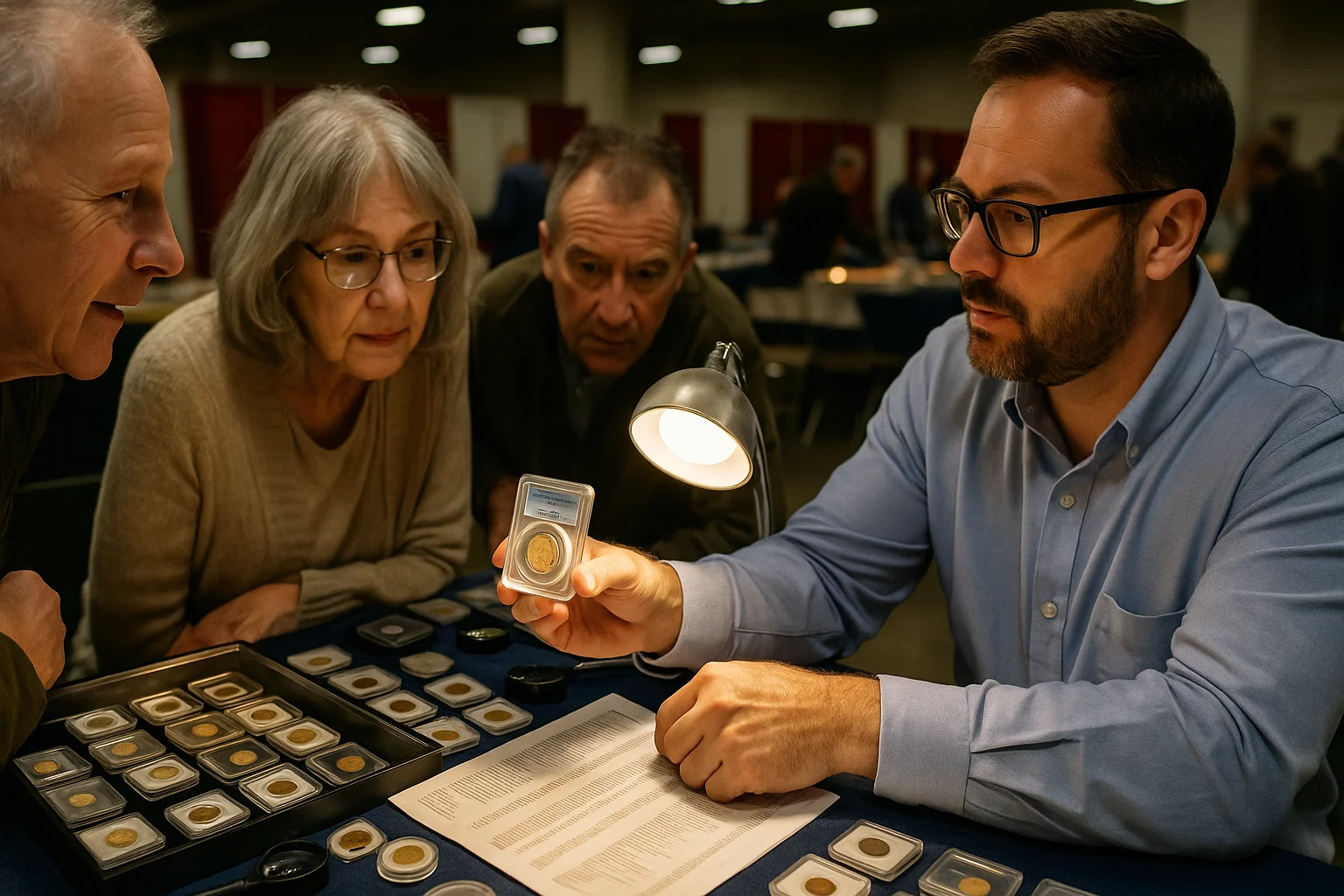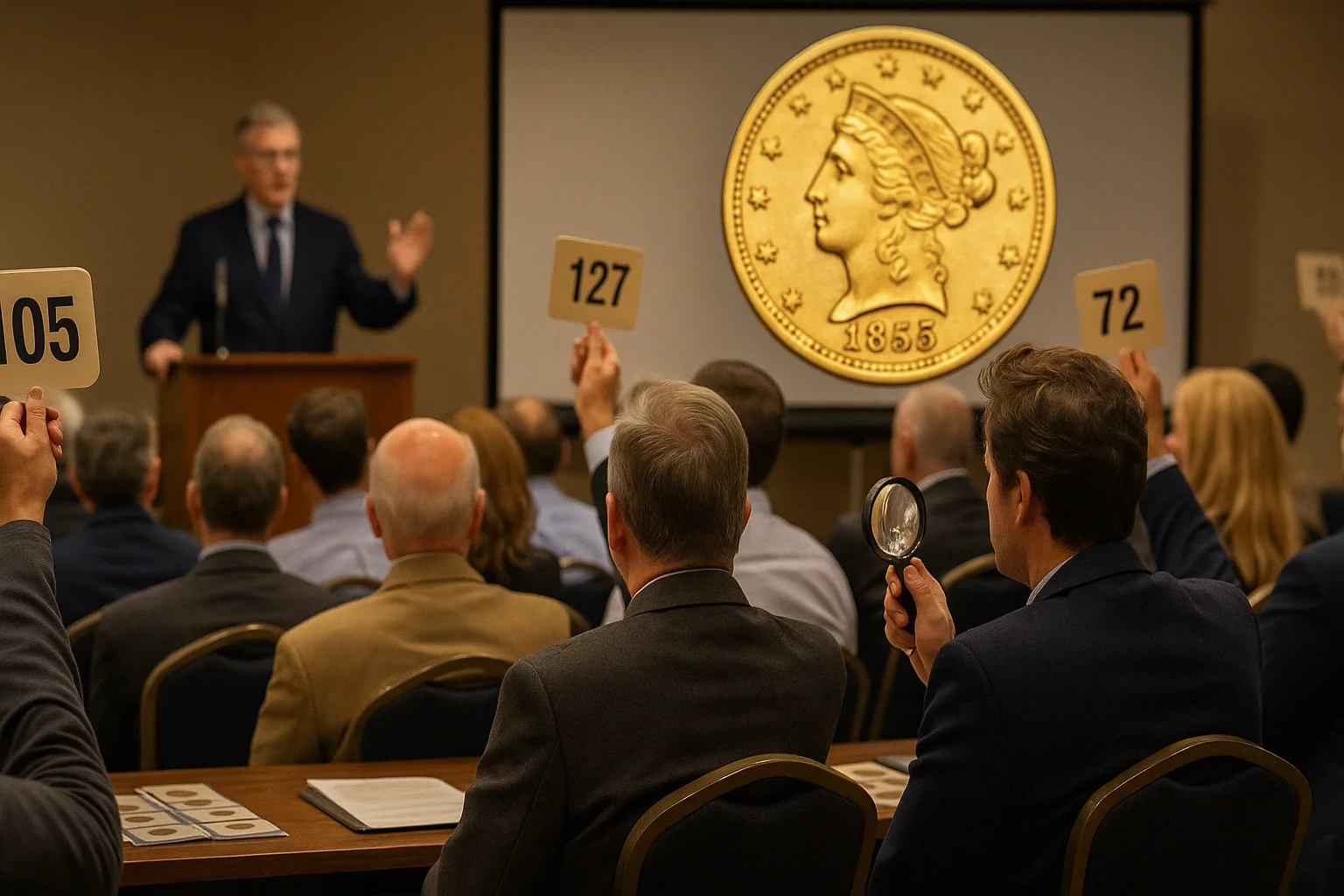When people talk about 1 dollar gold coin value, the first thought is often tied to its gold content. These coins were struck from real gold, and that alone gives their owners a sense of something special. But the truth is more complex: these coins were once everyday money during the 19th century, yet they were never truly practical in circulation.
These gold dollars have a special place in American numismatic history. Between 1849 and 1889, three different designs were released, each reflecting the style and economic mood of its era. Today, after the whole century, these coins are still a thing to discuss for collectors and investors. Thus, we offer you to look at the history, the designs, their current market value, and what separates them as objects of collecting vs. investing.
The History of the Gold Dollar
The U.S. Mint began striking the $1 gold coin in 1849. The timing wasn’t random — the discovery of gold in California the year before had set off the famous Gold Rush, flooding the market with new supplies of the precious metal. To make use of it, Congress authorized several gold coins, including the smallest of them all: the gold dollar.
It was tiny in size, measuring only about 13 to 15 millimeters in diameter. Many people complained that the coin was too easy to lose. Some even joked that it could slip through a trouser pocket unnoticed. Despite its impractical size, it stayed in production for forty years.
Key points in its story:
1849 – official start of production at the Philadelphia Mint.
1850s – expansion to branch mints in Charlotte, Dahlonega, and New Orleans.
1861 – Confederate strikes at the Dahlonega Mint during the Civil War.
1889 – final year of issue, after which the denomination was permanently retired.
The coin’s small size and short-lived nature gave it an unusual place in U.S. currency: never very practical, but deeply memorable.

Designs and Types of the Gold Dollar
Over its four-decade lifespan, the gold dollar went through three main design types. Each design has its own story and influences how collectors value it today.
Type I: Liberty Head (1849–1854)
The earliest version showed Liberty wearing a coronet inscribed with “LIBERTY.” The coin’s tiny size made the details appear delicate, and many examples wore down quickly in circulation. Type I dollars are remembered as charming but impractical, as their 13 mm diameter was smaller than a modern dime.
Type II: Indian Princess Small Head (1854–1856)
In 1854, the Mint introduced a new look: an Indian Princess with a small feathered headdress. This was an attempt to modernize the coin’s appearance and broaden its appeal. Unfortunately, the coin’s thin, wide planchet caused striking problems. Weak details plagued the series, and its short three-year lifespan makes Type II the scarcest design.
Type III: Indian Princess Large Head (1856–1889)
The final version adjusted the portrait, enlarging the Princess’s head for a fuller design. Striking quality improved, and the coin remained in this form until the series ended in 1889. While more common than Type II, high-grade examples still command strong prices today.
Mintages and Rare Years
Mintage numbers varied dramatically, and this has a direct effect on today’s prices. Coins struck at branch mints are often far rarer than Philadelphia issues. In the table below you can see a short overview of key mints and features:
Mint | Symbol | Notes |
Philadelphia | (no mark) | Struck the largest numbers, most common overall. |
Charlotte, NC | C | Small mintages, Southern gold; highly collectible. |
Dahlonega, GA | D | Produced some of the rarest coins, including the 1861-D tied to the Confederacy. |
New Orleans, LA | O | Mintages moderate; scarcer than Philadelphia but not as rare as C or D. |
San Francisco, CA | S | Came later in the series; desirable for Western collectors. |
Notable key dates:
1849-C Open Wreath (Type I) – extremely rare and valuable.
1855-D (Type II) – short run, weakly struck, highly prized.
1861-D – struck under Confederate control, one of the most historic U.S. gold coins.
These issues illustrate how rarity is not only about numbers but also about context: where and when the coins were made adds enormous weight to their desirability.
Rare Varieties and Interesting Cases
Beyond the regular issues, several unusual varieties stand out and add excitement to the series.
Double strikes: A second impression of the design, slightly offset, creates a ghostly double image.
Off-center strikes: Misaligned planchets left coins with blank areas where design should be. Dramatic off-centers are especially collectible.
Proof issues: Struck with polished dies for collectors. Surviving Proof $1 gold coins are breathtakingly rare and command six-figure prices at auction.
1861-D Confederate strike: A piece of Civil War history in coin form, highly desirable for both numismatists and historians.
Such coins aren’t just money — they are artifacts that bridge minting technology, politics, and human error
Value by Condition: A Practical Table
Condition, or grade, plays a huge role in determining 1 dollar gold coin value. A worn coin and an uncirculated example can differ by thousands of dollars in price.
Here’s a simplified look at approximate market values (actual prices vary depending on year, mint, and rarity):
Grade / Condition | Type I Liberty Head | Type II Indian Princess | Type III Indian Princess |
Very Fine (VF) | $250 – $400 | $500 – $800 | $300 – $450 |
Extremely Fine (XF) | $400 – $600 | $800 – $1,200 | $450 – $700 |
About Uncirculated (AU) | $600 – $900 | $1,200 – $2,000 | $700 – $1,100 |
Mint State (MS-60 to MS-63) | $1,000 – $2,500 | $3,000 – $6,000 | $1,200 – $2,500 |
Choice MS (MS-64 and higher) | $3,000+ | $7,000+ | $3,500+ |
Note: Special years and mint marks (such as Dahlonega and Charlotte issues) can increase beyond these ranges.
Tip: Apps like Coin ID Scanner can quickly identify the type, mint mark, and approximate value of a $1 gold coin, making it easier to spot differences between varieties without relying only on catalogs.
The Gold Dollar as a Collectible
The $1 gold coin’s collectible appeal lies in its beauty and history. But within the hobby, strategies differ. Some lead to long-term satisfaction and value, while others leave collectors disappointed.
Successful Strategies
A smart way to handle $1 gold coins is by building a type set, owning one of each design. Another is looking for branch mint issues like Charlotte or Dahlonega, which are scarcer and stay in demand. High-grade coins are also a safe bet, since uncirculated pieces usually keep their premium and grow in value.
Unsuccessful Strategies
Some paths rarely pay off. Focusing only on the gold content misses the real numismatic worth, as the metal itself is minimal. Worn coins, even if rare, lose much of their appeal. And treating all $1 gold coins as equal overlooks big differences between common Philadelphia pieces and scarce southern mint issues.
In short: smart collecting recognizes that value isn’t just about age or gold, but about context and condition.
Gold Dollars in Today’s Marketplaces
With FAQs moved aside, it’s worth ending on a practical note: where these coins appear today and how they trade in the real world.
Auction houses: Major firms like Heritage Auctions or Stack’s Bowers frequently list $1 gold coins, including key rarities.
Coin shows: Dealers often display them alongside larger U.S. gold pieces, and shows give buyers the chance to inspect coins in person.
Private sales: Some of the rarest examples move quietly between advanced collectors.
Online platforms: While eBay and similar sites feature them, careful authentication is crucial.
Market values respond to both gold prices and collector demand. During gold price spikes, even common-date coins gain attention. But the real drivers are rarity and condition — two factors that consistently set auction records.

The Value That Remains
The gold coin may be small, but its story is rich: from early 19th-century minting to today’s auctions, it remains a piece of history with lasting value. What matters most is design type, mint mark, and condition — details that turn a tiny coin into a prized collectible. And be it seen as an investment or simply as a historical piece, the gold dollar keeps its place as one of the most fascinating pieces of American coinage.



